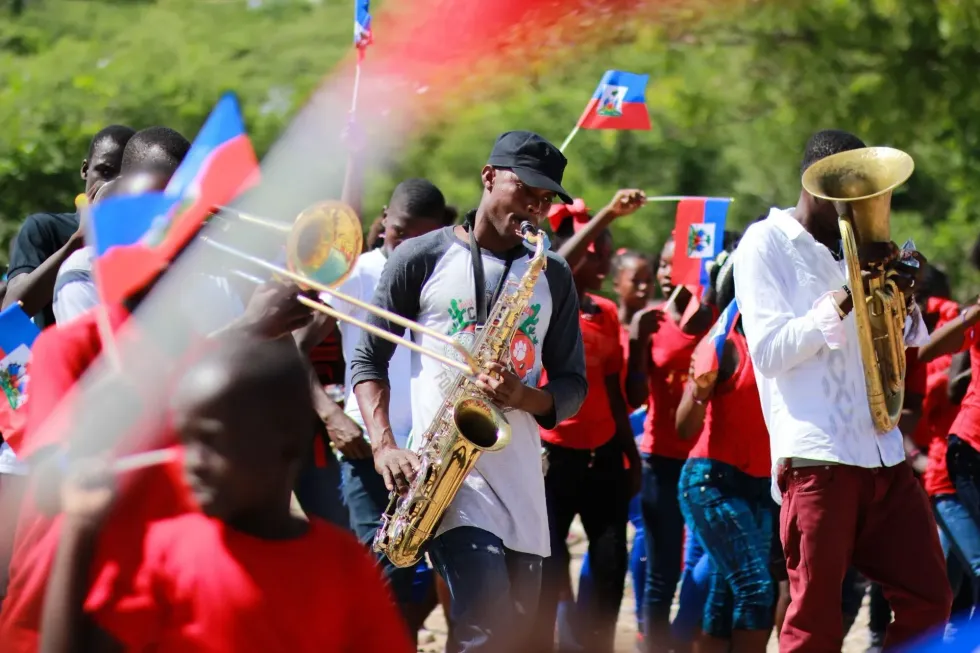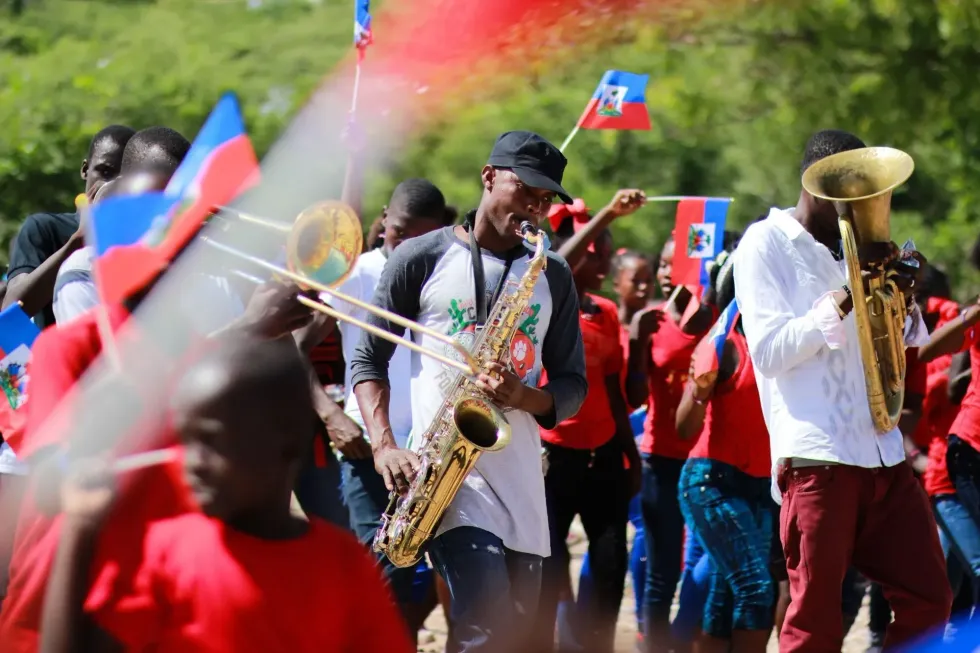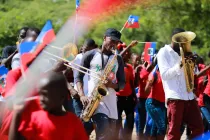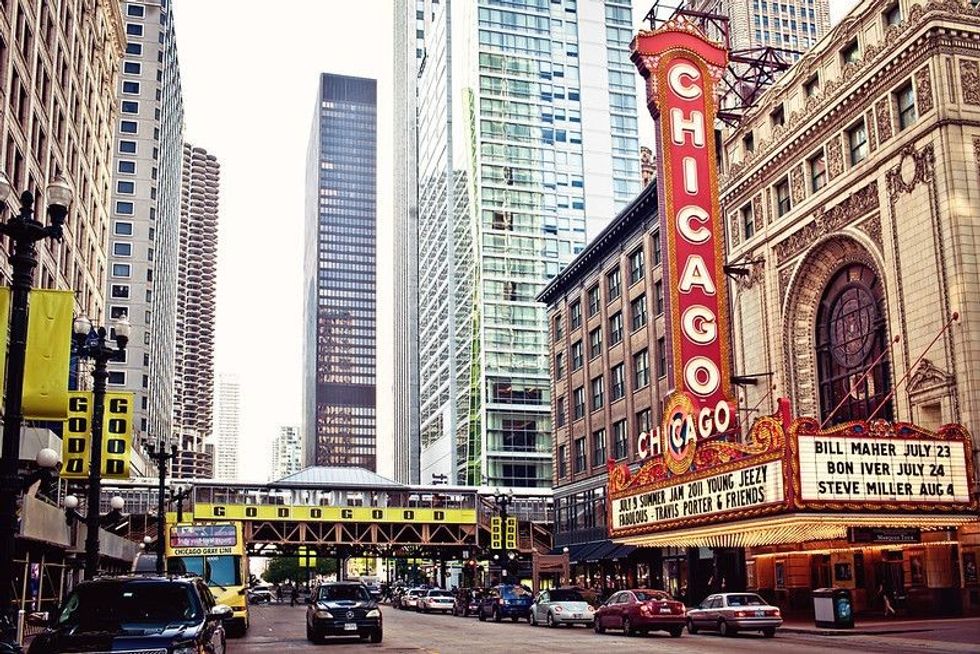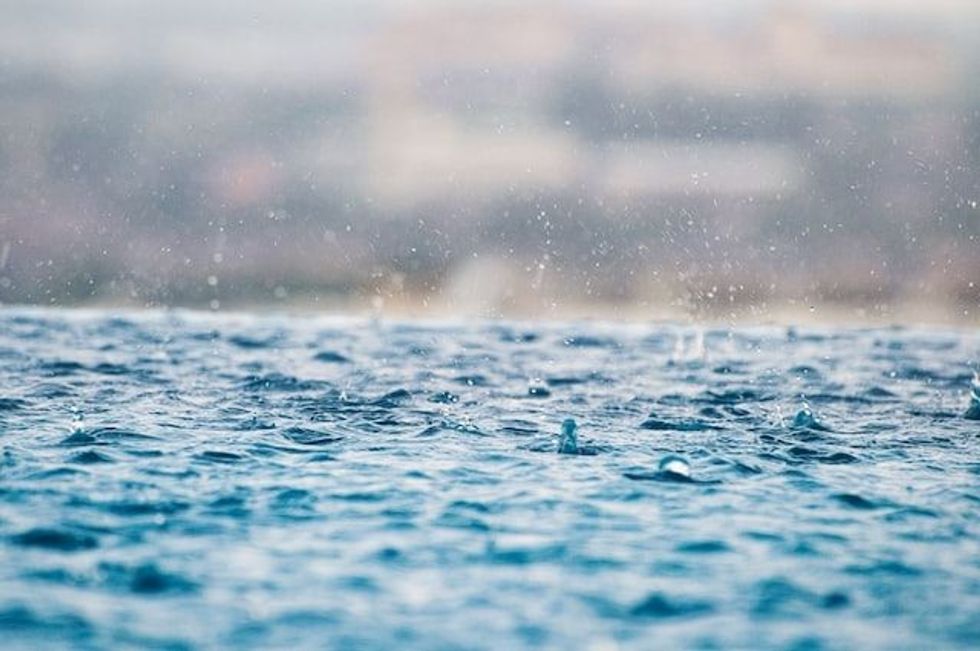39 Interesting Facts About Haiti That You Probably Didn't Know
Haiti is a gorgeous Caribbean nation located on the Hispaniola islands.
Haiti is known for its rich history, cultural extent, and the amazing scenery that the country is home to. The country is filled with golden beaches, mountains, and clear waters.
However, all is not good with the country as it ranks among the poorest countries in the world. Haiti is one of the lowest-income countries in the Americas with a major part of the population living below the poverty line.
Both French and Haitian Creole are the official languages of the country.
Haiti has etched its name in the history book as it became the first complete black-led republic in the world, and it also abolished slavery very early compared to the United States.
The economy of Haiti is considered to be poor because poverty is a huge issue in the country. The Haitian tourism industry is one of the thriving businesses in the country, with a major chunk of the funds for the economy coming from the tourism industry.
If you enjoyed reading this article about Haiti, be sure to check out articles on facts about Belarus and facts about Botswana here at Kidadl!
Bizarre Facts About Haiti
Haiti is considered to be the poorest country in the Caribbean and it is also among some of the poorest countries in the world. Because of this, Haiti is home to some old customs and practices that are truly bizarre!
Being the poorest country in the Caribbean, the country relies majorly on aid from countries like Canada and United States.
In December 1990, Jean-Bertrand Aristide became the President of the country. He was dismissed from the position by a military coup that took place in the country, and he later fled the country.
However, he still served the role of President of the country twice, once from 1994-1996, and the second term lasted from 2001-2004. He got dismissed again during his later years as the President.
Cock-fighting is a form of traditional sport in Haiti. This practice is seen as inhumane because of how the roosters are fed hot peppers drowned in rum and raw meat to make the roosters combative and robust. The payout of the competition is around $70, which is what a normal person in Haiti earns in a month.
Because of the majority of the population of Haiti living in poverty, the country is often plagued by various diseases. In October 2010, the country was tormented by a cholera outbreak.
This outbreak claimed an estimated 6,500 lives. By the year 2016, Haiti reported 771,000 cases of cholera. Based on reports by the Centers for Disease Control and Prevention (CDC), the disease was brought to the country via the UN peacekeepers that visited the country from Nepal.
Haiti is home to not one but two official languages! The country adopted French as its official language. Haitian Creole and French are the official languages spoken in the country. It is estimated that around 95% of the Haitian population is fluent in Haitian Creole and the majority of Haitians speak Creole.
Another amusing fact related to the poverty-stricken country is that only the prosperous population has access to phones and the internet. Currently, Haiti ranks at the bottom of the Network Readiness Index (NRI) which measures the country's technological and information development. Only the wealthy minority in the country have access to these services.
Haiti's currency is called the Gourde. The name of Haiti's currency is taken from the common food item called 'Gourd'. The vegetable has been an important source of food for the locals and was adopted as the currency until 1807 when the official currency was introduced and was named after the vegetable.
Since 2003, Voodooism has been considered an official religion in the country. There is a saying about Haitian people that terms the population as 70% Catholic, 30% Protestant, and 100% Voodoo! This tradition has been a part of the Haitian culture since it was developed in the 17th and 18th centuries.
The famous word 'zombie' is actually a Haitian word. The belief behind the term was strong as it was a word used by Haitian slaves who believed that death would send their souls back to their home continent of Africa.
Suicide was a common occurrence amongst slaves, and it was believed that the souls of people who took their own lives were sentenced to walk as undead slaves or soulless zombies in the plantations.
Haitians are known for their love of gambling. The locals are even known to pray to the gods through voodoo in order to gain information about winning lottery tickets.
Smallpox, one of the deadliest diseases that is estimated to have killed over 300 million people globally, was discovered for the first time in the year 1507 in Haiti.
Because of the laws passed in the 1970s, filing for a divorce is a relatively easy procedure in Haiti. These laws state that in order to get a divorce, only one person has to show up from the couple.
Because of its favorable location and close proximity to the Caribbean Sea, Haiti was a safe haven for pirates. Locals were employed by pirates to work on plantations and mining shafts.
A majority of the Haitian population makes a living by farming. Other major industries in the country are clothing, manufacturing, and exports. The country exports wood, sugarcane, mangoes, coffee, corn, and rice.
Facts About Haiti's Food
Haitian food is diverse as it takes inspiration from various cuisines that were introduced to the country by colonizers.
The traditional Haitian menu is based on locally found fruits and vegetables like mango, guava, gourd, and cabbage. Meat dishes are known for being spicy! One of the most popular dishes in the country combines spicy, marinated pork cubes with black rice prepared from mushrooms.
During the 17th century, the rocky island of Tortuga in Haiti was a pirate stronghold for those that preyed on Spanish treasure ships in the Caribbean.

Facts About Haitian Culture
Around 60% of the monthly income of Haitian people is spent on food. The poorest part of the population spends around 80% of their earnings on food. This has led to poor quality of life in the country, with basic necessities becoming much more of a luxury item.
Haitian culture is thought to be diverse, and the presence of colonizers can still be seen in architectural forms.
The name of the country, 'Haiti' is derived from the language of the Taino, the indigenous people of the country. The name means 'land of the high mountains'.
A small population in Haiti comprises individuals that are of Middle Eastern origins. These people are descendants of merchants and traders that came to Haiti from countries like Palestine and Lebanon. This small population has been a part of the country ever since the late 19th century and early 20th century.
Jean-Jacques Dessalines, a revolutionary leader, acted as the first ruler of Haiti. He created the Haiti flag that is ever-present to this day. The white color was removed from the flag to symbolize the country leaving behind the colonizers. The blue and red stripes on the flag are used to symbolize the native population of the country.
Haiti's economy has seen a steep decline over the years. The budget for the country on a yearly basis is estimated to be around $200-300 million, which is seen as a low budget.
Haitians have also lost around $200 million in shady pyramid schemes. The money was lost when the company collapsed.
The country is behind in development because of this low budget, and many of the locals cannot access trains because there are no railroads in the country. Cars are rarely seen, and most of the transport is done via public buses, taxis, and a vehicle known as tap-tap.
Around 80% of school-going children attend primary schools in the country, as education for this age group was made compulsory by the government. However, due to education being costly above the primary school level, only 40% of Haiti's population can afford to send their children to schools that are owned by religious groups.
The University of Haiti in Port-au-Prince, Haiti's capital, is the only public university in the country. It was established in 1944.
Haiti, just like its neighboring countries in the Caribbean Sea, celebrates Christmas on December 25. The occasion is marked by painting houses and whitening tree trunks.
Based on research, it is estimated that the richest 1% of the country own half of the country's wealth. It should come as no surprise that the country has an extreme poverty level. Because of this issue, people who are able to leave the country often migrate to a rich country like the United States.
The country is home to two UNESCO World Heritage Sites, Citadelle, and Laferrière. A mountaintop fortress is situated on the northern coast of the country.
Henri Christophe, a crucial member of the slave rebellion, built the citadel. The citadel is amongst the largest citadels in the Americas and was granted the title of a heritage site in 1982 along with Henri Christophe's residence, the Sans-Souci Palace, which also lies in northern Haiti.
In the year 1903, a competition was held by the Haitian government for a national anthem. The competition was won by Nicolas Geffrard (composer) and Justin Lhérisson (writer). The anthem paid tribute to Jean-Jacques Dessalines, who led the revolution against the French colonizers and freed Haiti.
Unfortunately, Haiti has seen its fair share of slavery because of the colonizers. It is estimated that around 90% of the total population has descended from African slaves. The remaining 10% of the population is comprised of mixed-descent people.
Haitian art is revered for its colorful and bold paintings that have been etched into the culture.
The Caribbean is a diverse region and is home to some of the most astonishing festivals in the world. The Haitian Carnival is held in Port-au-Prince each year, and people participate in the carnivals to relieve stress and enjoy the festivities.
This carnival has gained popularity over the years, and it has attracted a lot of tourists to the country. The tourism industry is a large part of the Haitian economy, as it generates around $200 million from the industry.
Because of the rigorous lifestyle of the native population, Haiti has a low life expectancy. Life expectancy for women is around 53 years and 50 years for men.
This low expectancy is directly related to the expensive food the country offers, because of which a certain percentage of the population remains malnourished. It is estimated that only around 40% of the total population has access to health care. The country has the densest population in the Western Hemisphere.
The national sport of Haiti is soccer, or football, as it is known around the world. Haiti's first participation in the competition came way back in 1974.
The Haitian rivers are some of the most polluted bodies of water in the country. Proper sanitation and water supply are still a challenge to the people.
Haiti, of all the countries in the Western Hemisphere, has the highest orphan population. The problem stems from diseases like AIDS and also violence. It is estimated that prior to the 2010 earthquake that shook the country, around 430,000 Haitian children were already living their lives as orphans.
Haiti houses various cave paintings by the Taino tribes. These paintings now serve as national symbols that attract tourists.
Haiti's History
Haiti is one of those countries that has a rich history. From colonization to abolishing slavery, the country set several standards during its struggle for independence that are still looked back upon fondly.
Haiti is the third-largest country in the Caribbean Sea. Cuba and the Dominican Republic rank first and second, respectively. Standing at 8792.6 ft (2,680 m) above sea level, the Pic la Selle is Haiti's highest peak.
Haiti and the Dominican Republic are both located on the Hispaniola islands, and they share the region. The Dominican Republic holds around two-thirds of the island in the eastern region, and Haiti occupies the remaining one-third of the western regions.
The Capital city of Port-au-Prince has an estimated population of 2,843,925 in 2021. It is believed that immigrants from Central and South America settled the Hispaniola islands.
The country was first inhabited around 5,000 BC by the Arawak people. Villages were established around 300 BC, and the Taino sect that originated in South America became the dominant group of Arawaks.
In its history, Haiti has been ruled by more than 70 dictators! The reign lasted between 1804-1915.
Upon its discovery by Christopher Columbus in the year 1492, the country was named 'La Isla Espanola' by Columbus. The name roughly translates to 'Spanish Isle'.
After independence, the country's name was changed from Saint Domingue to the Ayiti, or Haiti, as it later became known as. Columbus later died in Port-au-Prince, the country's capital, and was buried in the Santa Maria Cathedral.
Columbus' arrival is seen as one of the worst things to happen to Haiti.
However, it should not be forgotten that the actual colonization of Haiti occurred when the French invaded the island and ruled it for over 179 years. The wealth of the country was drained and large portions of the natural forests were deforested, which led to natural disasters affecting the country frequently.
Haiti became the first country in the world to establish a black-led republic. The Haitian revolution occurred between 1791-1804, with enslaved Africans playing a major role in independence.
The revolution was led by Jean-Jacques Dessalines. In January 1804, soon after the revolution, the country finally gained independence. Independence meant that Haiti became the second country in the Western Hemisphere to liberate itself from European rule and also became the first Caribbean nation to do so.
Slaves were still brought from Haiti to the United States until laws to abolish slavery came into effect in 1865. Haiti is known as the second-oldest country in the Western Hemisphere to gain independence.
The government of Haiti is considered to be a semi-presidential republic. The Prime Minister reports to the head of the country, the President.
Elections take place every five years, and the Prime Minister is later appointed by the President of the country.
Jovenel Moïse, the former President of the country, was assassinated on July 7th, 2021, and prior to his assassination, he appointed Ariel Henry to be the next Prime Minister of the country. Henry will continue to serve as the President and Prime Minister until a new President is voted in 2021.
Slavery was abolished in 1801 in Haiti when Toussaint Louverture came into power.
Geographically, Haiti is blessed with some of the most stunning beaches in the world. These beaches are of pristine quality and are surrounded by luscious mountains and forests.
The coastal spot is visited by locals as well as tourists all year round. Labadee, a private resort situated on the Haitian northern coast is one of the most popular spots for tourists to reside when they visit the country.
Haiti has the highest biodiversity level in the Caribbean compared to any other country in the region. There are at least 5,600 species of plants in the country. The Haitian Solenodon, a small venomous mammal, is endemic to the country and is currently listed as an endangered species.
The 7.2 magnitude earthquake that struck Haiti in 2010 left the country in shambles, with a death toll estimated at around 2,200 and 12,000 injured people. The epicenter of the earthquake was the capital city of Port-au-Prince.
Haiti has also seen a massive death toll in its past when Hurricane Flora took the lives of almost 8,000 people in the year 1963.
After the events of the 2010 earthquake, the Hospital Universitaire De Mirebalais operated on solar energy, making it the largest hospital in the world to run solely on solar power.
Haiti has seen a massive rise in deforestation over the years. This has led to the country being exposed to various natural disasters like mudslides and floods.
Alongside Port-au-Prince, Haiti's capital, the city of Jacmel is also well-known because it became the first place in Haiti and the whole of the Caribbean to have electricity and power.
Here at Kidadl, we have carefully created lots of interesting family-friendly facts for everyone to enjoy! If you liked our suggestions for facts about Haiti, then why not take a look at facts about Dublin, or facts about Guyana?
We Want Your Photos!
More for You
Bachelor of Arts specializing in English, Master of Arts specializing in English

Rajnandini RoychoudhuryBachelor of Arts specializing in English, Master of Arts specializing in English
With a Master of Arts in English, Rajnandini has pursued her passion for the arts and has become an experienced content writer. She has worked with companies such as Writer's Zone and has had her writing skills recognized by publications such as The Telegraph. Rajnandini is also trilingual and enjoys various hobbies such as music, movies, travel, philanthropy, writing her blog, and reading classic British literature.
Disclaimer
1) Kidadl is independent and to make our service free to you the reader we are supported by advertising. We hope you love our recommendations for products and services! What we suggest is selected independently by the Kidadl team. If you purchase using the Buy Now button we may earn a small commission. This does not influence our choices. Prices are correct and items are available at the time the article was published but we cannot guarantee that on the time of reading. Please note that Kidadl is a participant in the Amazon Services LLC Associates Program, an affiliate advertising program designed to provide a means for sites to earn advertising fees by advertising and linking to Amazon. We also link to other websites, but are not responsible for their content.
2) At Kidadl, we strive to recommend the very best activities and events. We will always aim to give you accurate information at the date of publication - however, information does change, so it’s important you do your own research, double-check and make the decision that is right for your family. We recognise that not all activities and ideas are appropriate for all children and families or in all circumstances. Our recommended activities are based on age but these are a guide. We recommend that these ideas are used as inspiration, that ideas are undertaken with appropriate adult supervision, and that each adult uses their own discretion and knowledge of their children to consider the safety and suitability. Kidadl cannot accept liability for the execution of these ideas, and parental supervision is advised at all times, as safety is paramount. Anyone using the information provided by Kidadl does so at their own risk and we can not accept liability if things go wrong.
3) Because we are an educational resource, we have quotes and facts about a range of historical and modern figures. We do not endorse the actions of or rhetoric of all the people included in these collections, but we think they are important for growing minds to learn about under the guidance of parents or guardians.
